Overview
Client
StreamLoan is a SaaS mobile collaboration and workflow platform, simplifying residential home purchases.
My Role
- UX & UI Design
- User Research
Timeline
2 months
Platform
iOS
The Problem
Manual work and too many hands in the pot draws out the already tedious process
Before a loan can be given to the borrowers, the borrowers need to abide by several loan conditions by providing the right documentation to the LOS. Borrowers cannot simply send them in directly to the LOS without the help of a loan officer. Currently the loan officers are manually gathering the loan conditions from the LOS and inputting them into Streamloan’s app, then sending the conditions to the borrowers. Once the borrowers upload the documents, the loan officers are in charge of approving or rejecting the documents before they send them to the LOS. This stressful process slows down the speed needed to quickly move borrowers along.
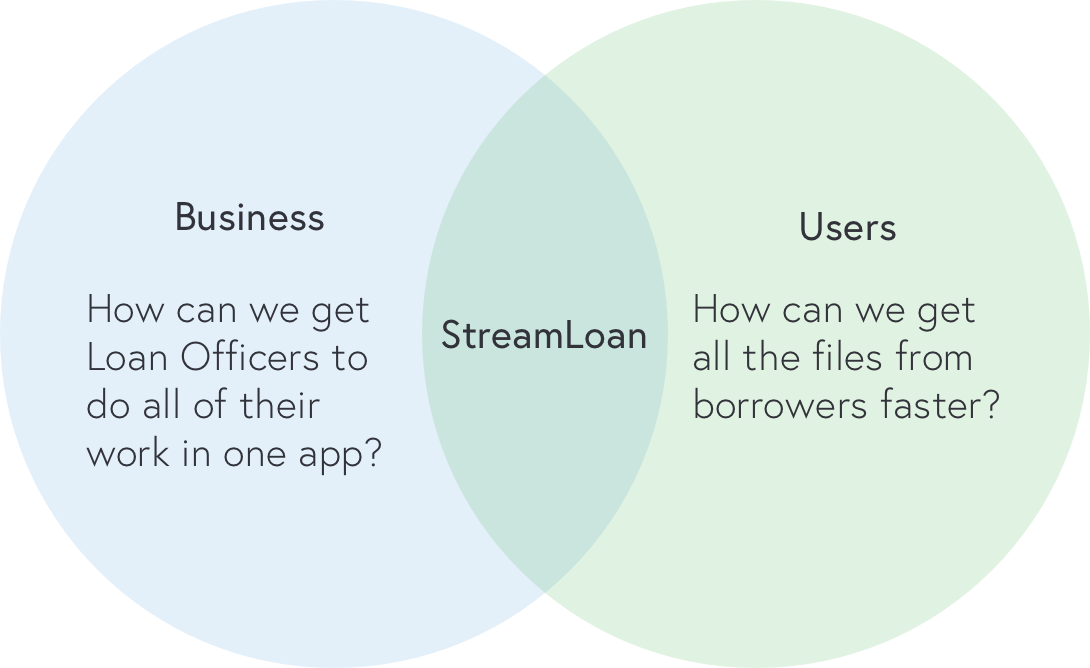
The Goal
- Eliminate manual copy, pasting and editing from the LOS to Streamloan
- Track, assign and review conditions in one application to eliminate redundant requests from different parties
- Provide the ability to send reminders to borrowers
Final Deliverables
Why spend an incredible amount of time utilizing different platforms when you can use one?
Six weeks was spent turning a manual process into a streamlined one. The end goal was to help loan officers do all of their work in the streamloan application without the hassle of using multiple applications and software. Our process was accepted and shipped.
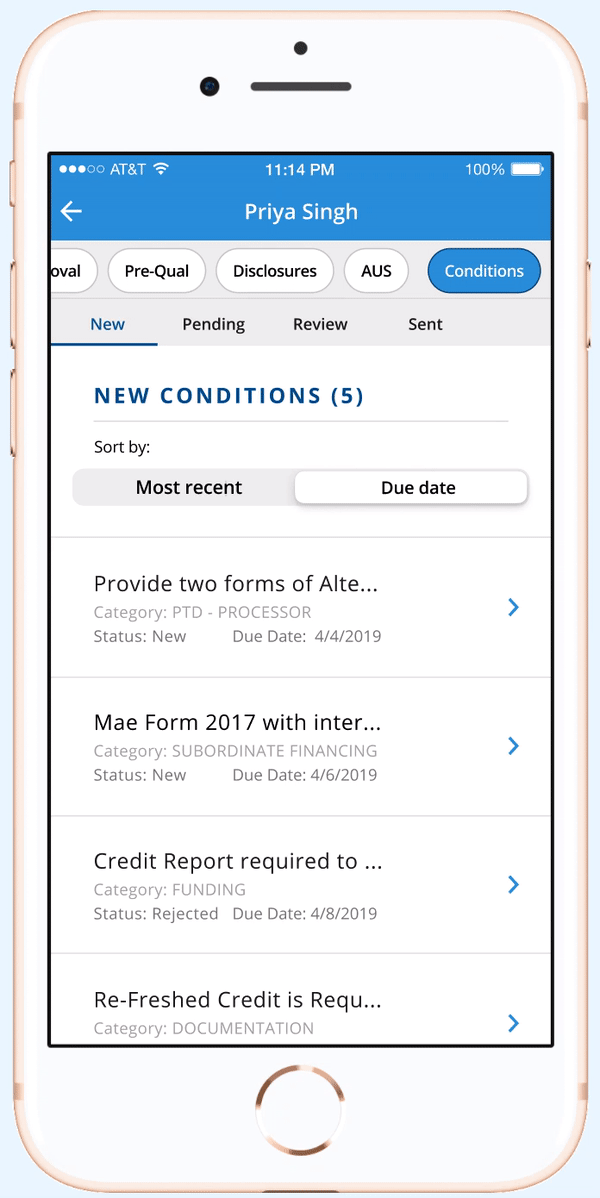
Say hello to loan conditions that just needs to be assigned and sent
Loan officers can now assign tasks to borrowers or co-borrowers. They can also add notes before assigning.
Send friendly reminders to speed up the process
Once loan conditions are uploaded by borrowers, loan officers can easily accept and reject files in the app.
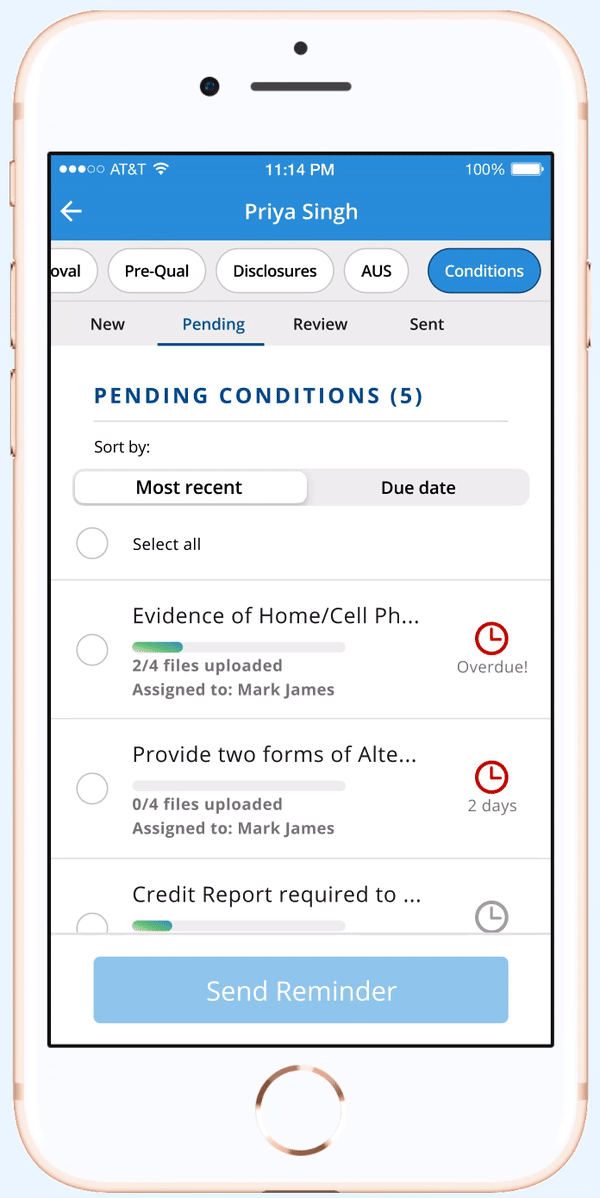
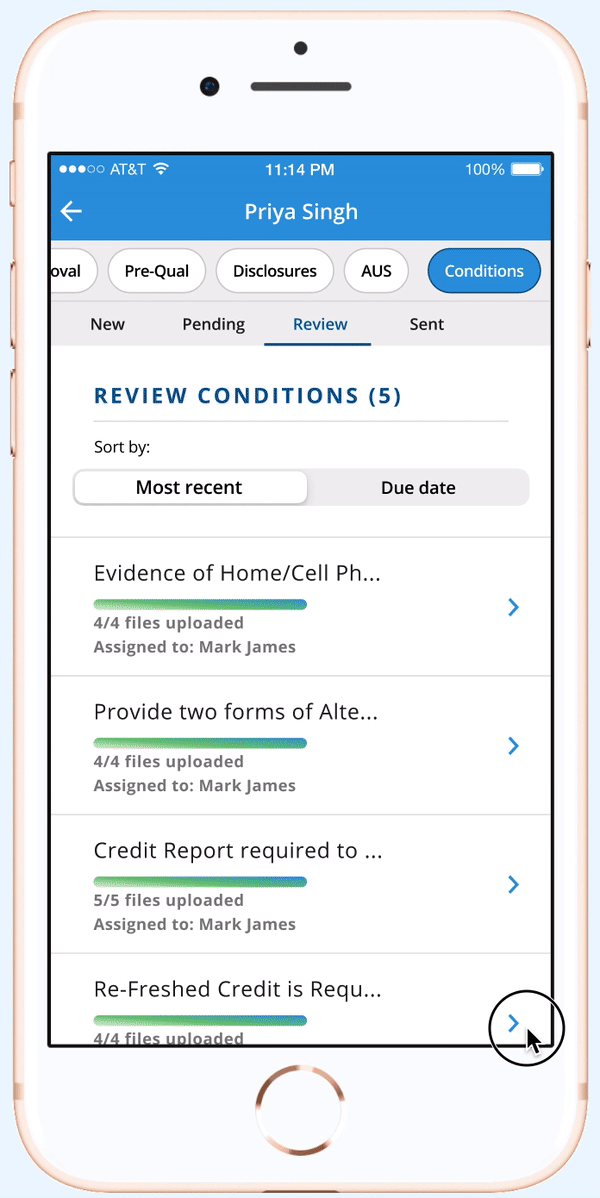
Make accepting and rejecting loan conditions an easy thing to do
Once loan conditions are uploaded by borrowers, loan officers can easily accept and reject files in the app.
Discovery Research
Extracting important information from research
- Loan Officers act as translators to help borrowers understand loan conditions in layman's terms.
- Following up with borrowers is a very important piece to help close out loans.
- Communication is the most stressful thing when trying to obtain the right files from the borrowers.
Competitive Analysis
Analyzed 7 competitors to see industry standards and common design practices.


What stresses you out about your job?



Design
Prioritizing important features in the new workflow
Based on the research, users really care about these types of features as it helps them speed up the process, and avoid confusion from multiple people involved.
What is most important for Loan Officers?
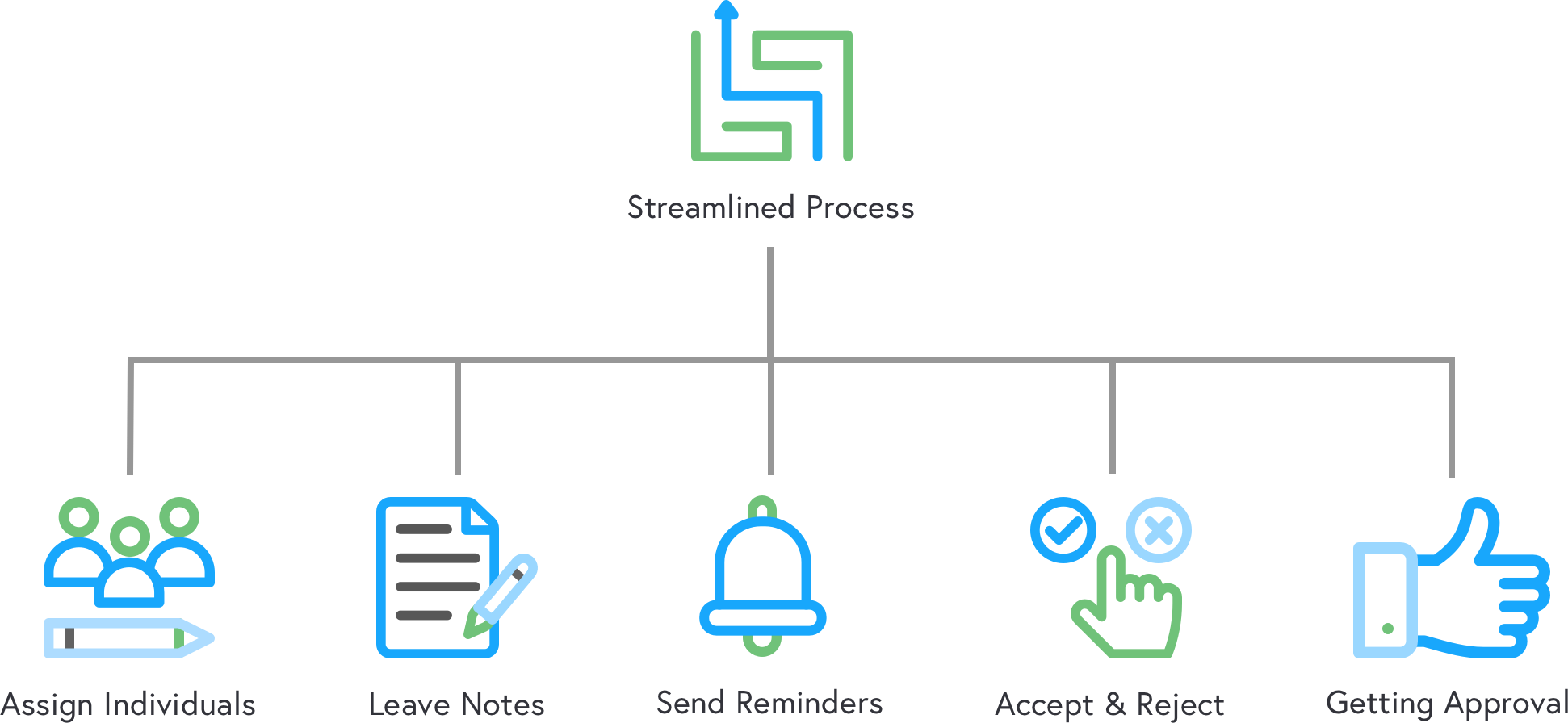
New Loan Conditions
Version 1
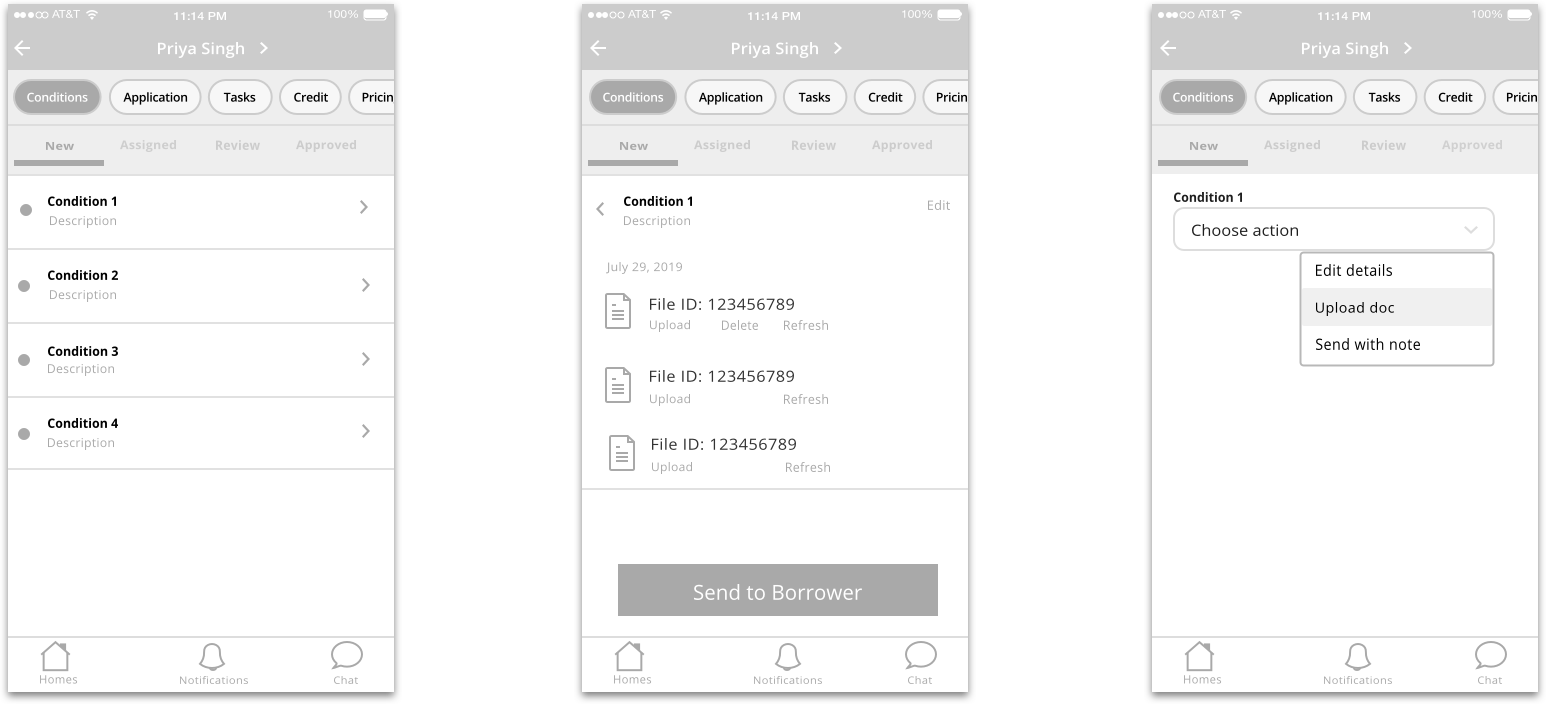
Version 2
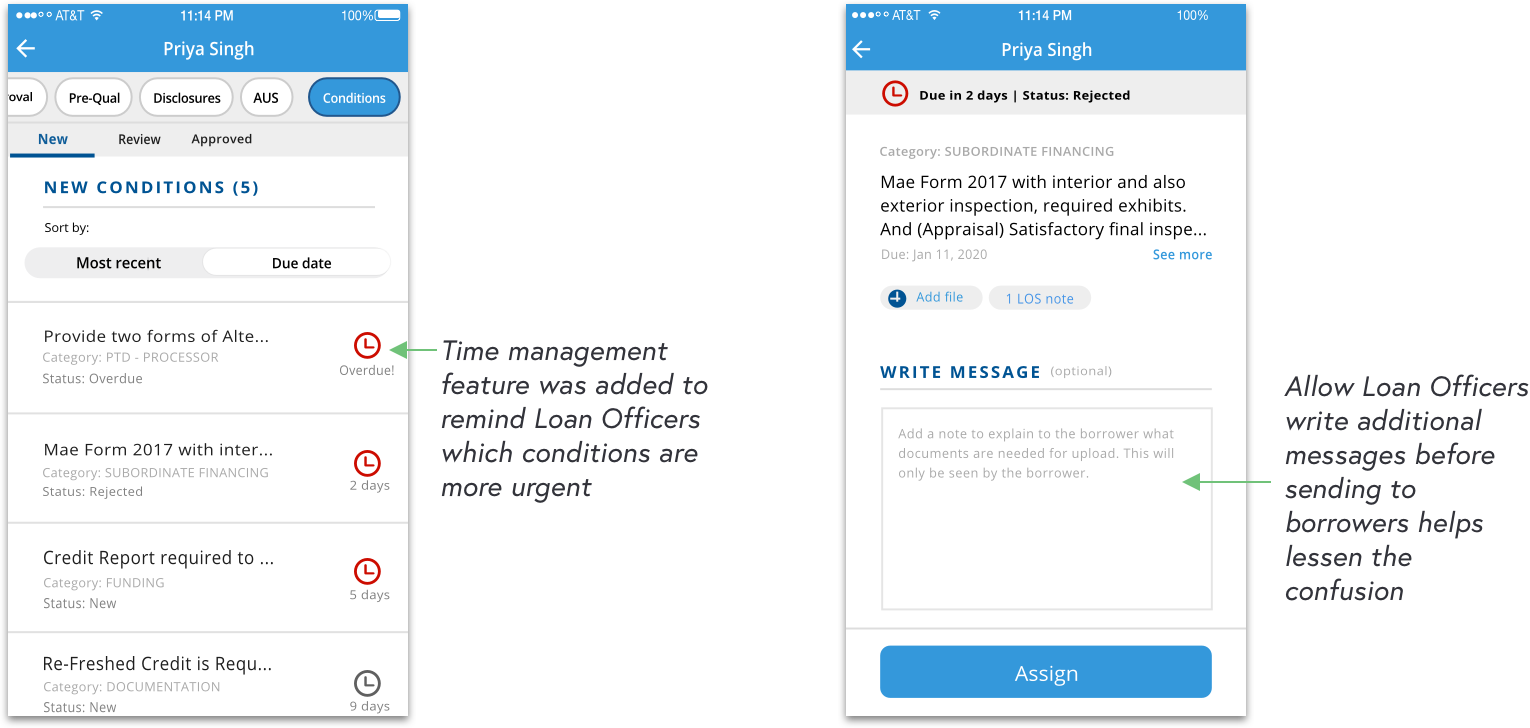
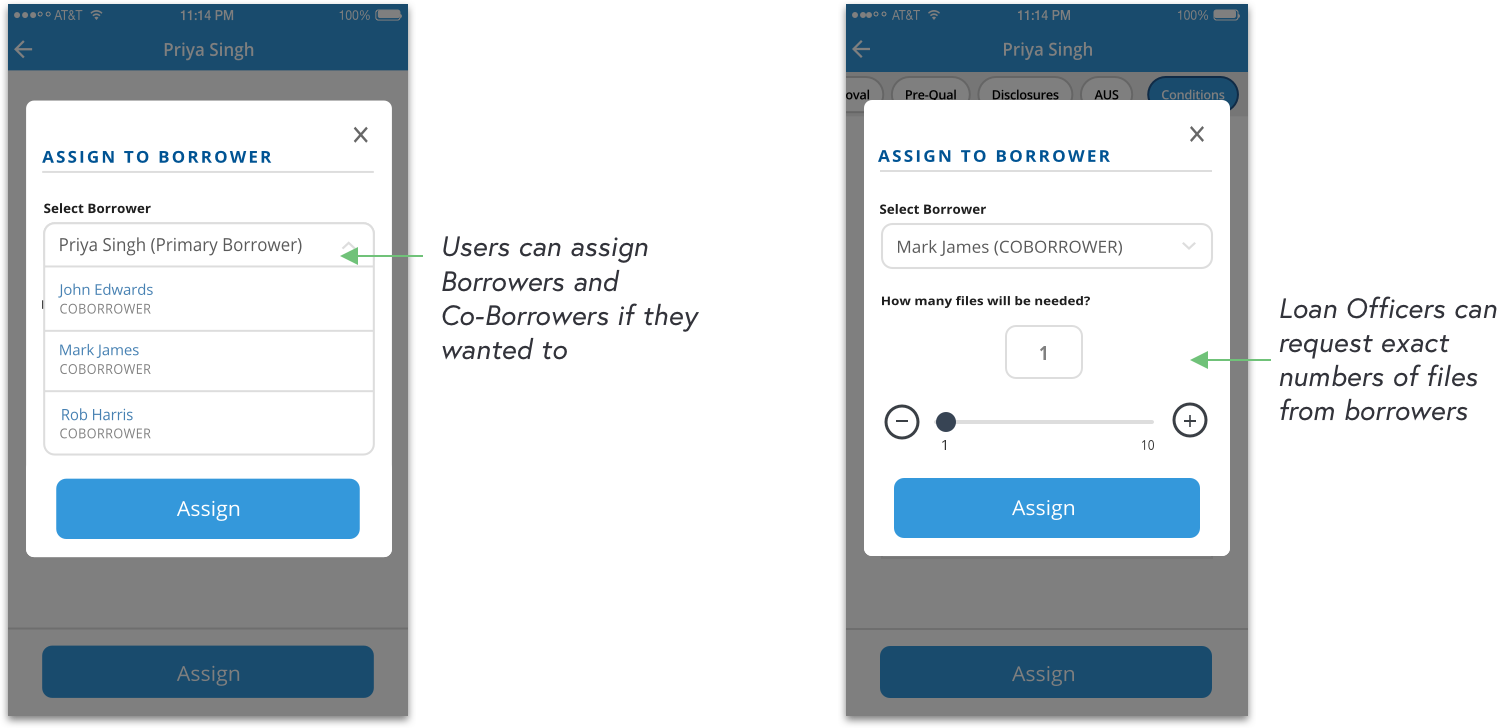
Sending Reminders + Reviewing Files
Reminders - Version 1
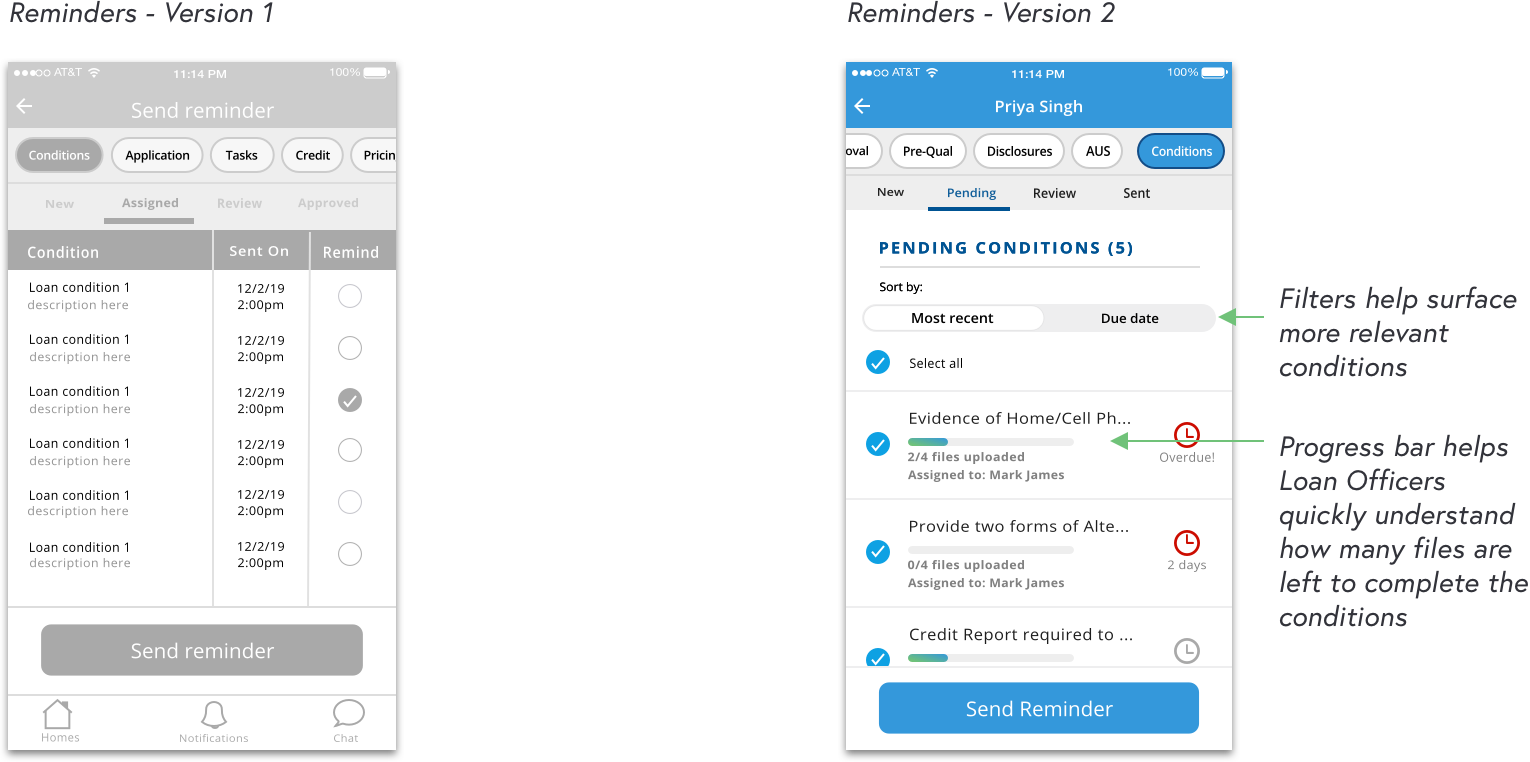
Reviewing - Version 1
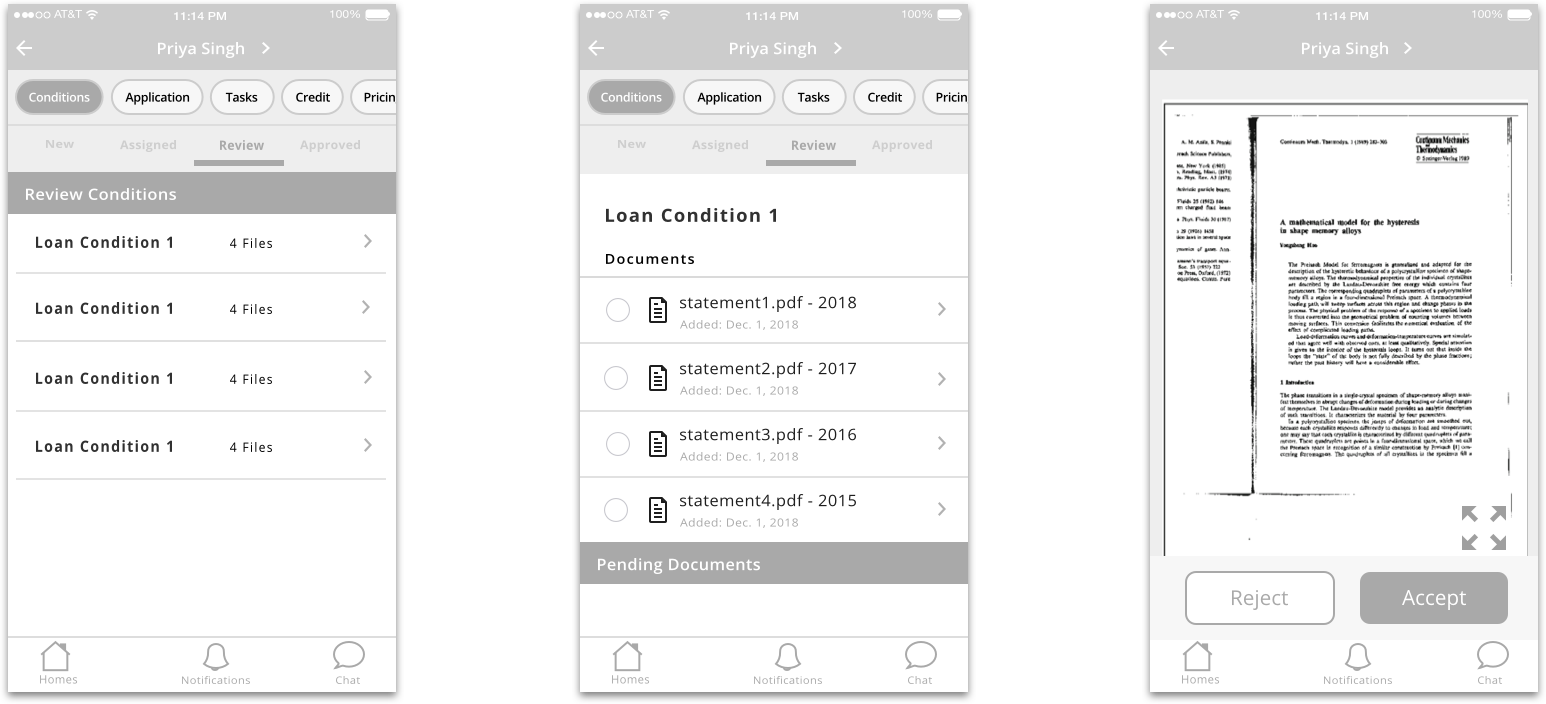
Reviewing Files - Version 2
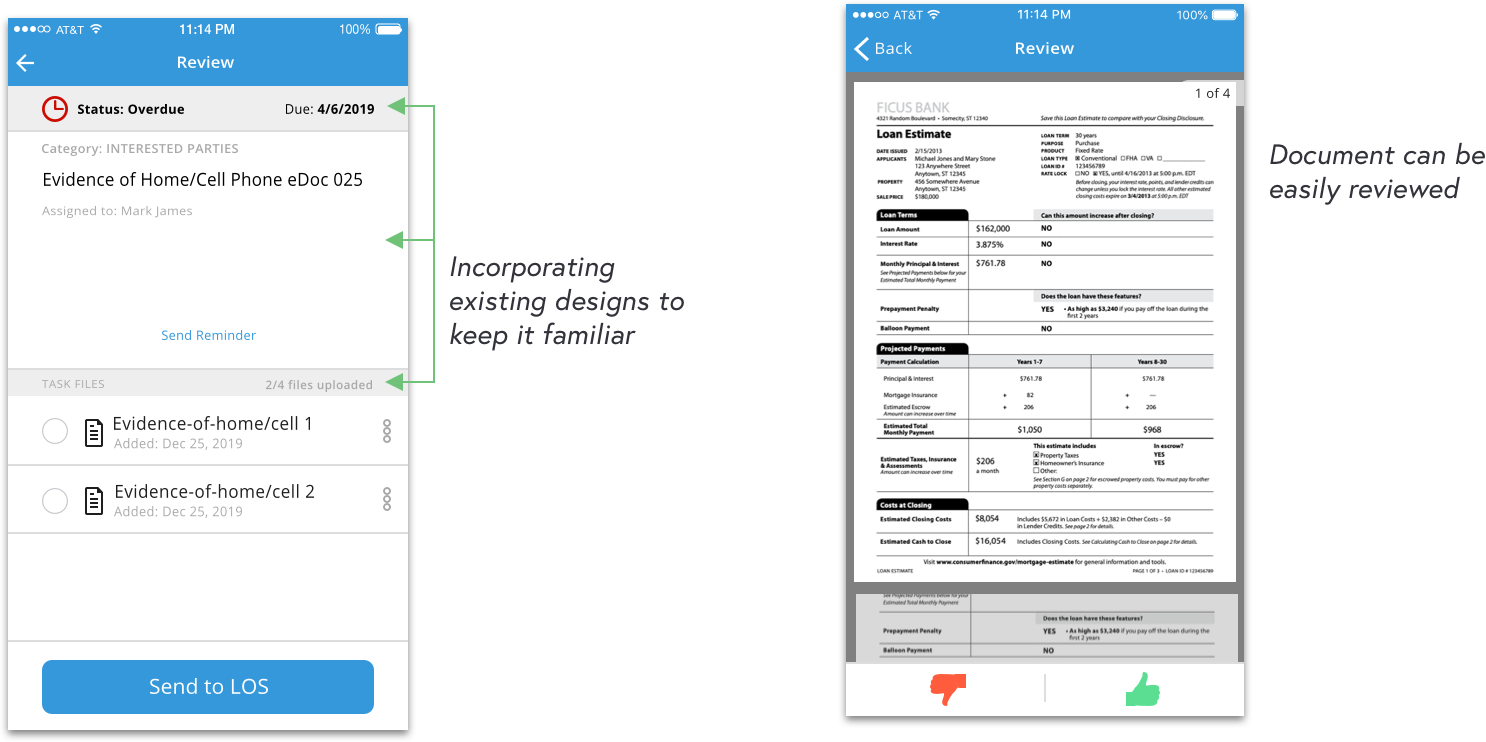
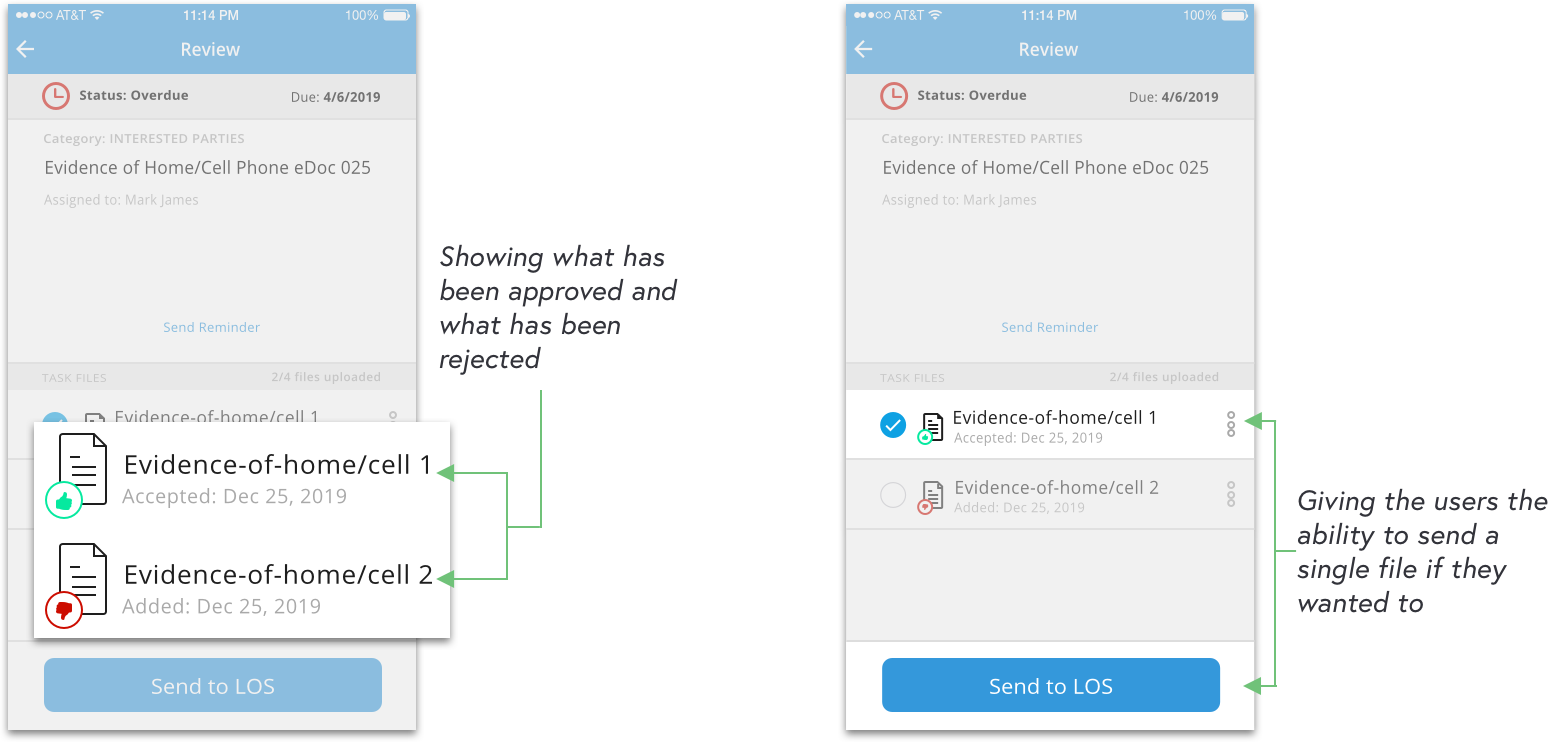
Usability Testing
Positively viewed that it will improve process
Recruited 6 Loan Officers to test the prototype. 98% of the prototype was received well. Although confusion with user flows and copy needed to be polished.

Design Iterations
Making sure meanings are not mixed up and user flows are understandable


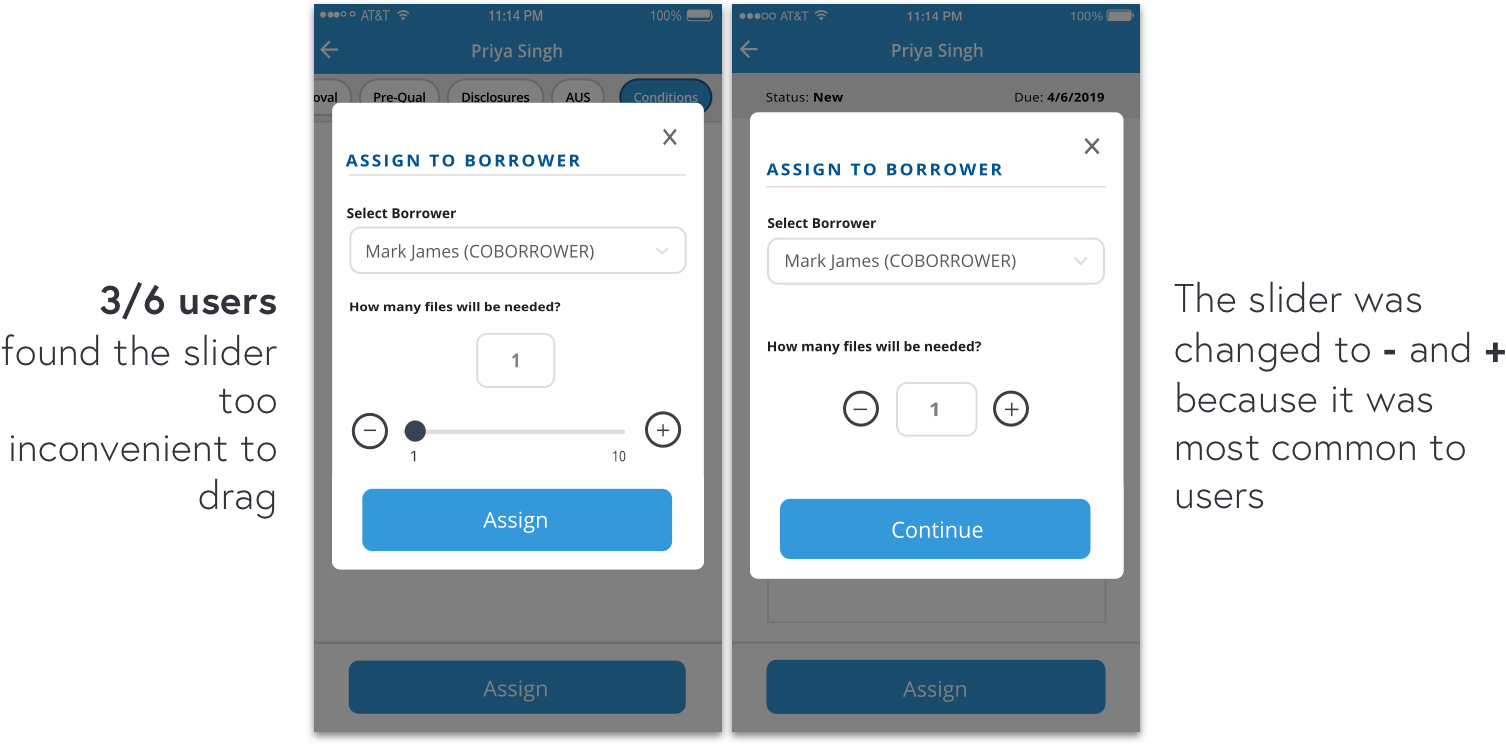
Reflection
Reiteration is the key to every successful design
Explore jargons and processes earlier on to help avoid confusion
One of the things that wasn’t caught early on was how Loan Officers used certain words. Every industry has their own jargon and I need to remind myself of that and incorporate it into my designs prior to testing.Learning to balance what the stakeholder wants and what the users want
During the design phase I had implemented certain designs that stakeholder wanted to test out during prototype. Users helped prove and disprove certain designs which were great.Really understanding how users approach their daily work is very valuable
If I had had more time, I would have done user journey mapping early on to understand the user’s process, use of keywords, and how they organize information in their minds.